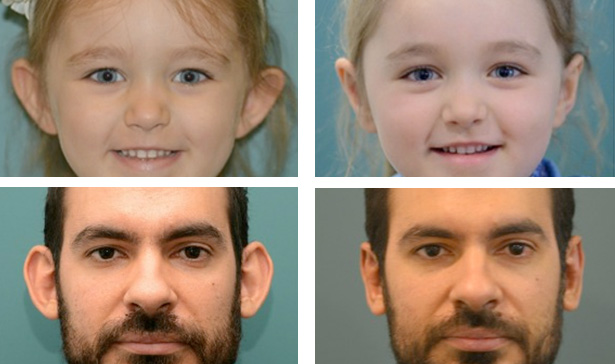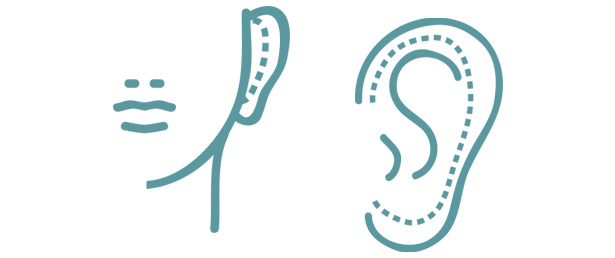If you are unhappy with the size or shape of your ears your self-confidence may be lower than it has to be.
Perhaps you feel they protrude too far, appear too large in proportion to your head or are misshapen.
There’s no need to let this cause any more personal distress: cutting-edge surgical techniques offer a lasting solution — otoplasty. Otoplasty (otherwise known as ear pinning) is a popular ear reshaping procedure that can correct asymmetrical ears, reduce their prominence or restore a more satisfying shape.
This ear surgery is available at Ethicos Institute, in perth performed by the experienced Dr Gillett.
How do we determine if you’re a good candidate for our otoplasty procedure?
Otoplasty is suitable for all patients who find their ears’ appearance and shape causing emotional or physical difficulties. We will conduct a thorough evaluation of your ears and candidacy during your consultation, to identify how beneficial otoplasty may be for you.


The otoplasty procedure should be completed in one or two hours, though this can vary from one case to another.
Your surgeon will create incisions behind one or both ears as required, to gain access to the cartilage. Scars will be kept as small as possible, for discrete results.
Your ear cartilage will be folded, removed or re-shaped to form the new shape or placement. Once your surgeon is satisfied, stitches will hold your ears in position.
An otoplasty is only performed under general anaesthetic.
After undergoing your otoplasty procedure, dressings will be fitted around your head to keep your ears covered. You will be told how long to wear this, and a small headband may be required afterwards as the next stage of protection.
You may feel some pain soon after the surgery, though painkillers will be prescribed for the first few post-op days. Swelling and bruising will fade over time. A follow-up appointment will be scheduled with your surgeon, to monitor your progress and offer further advice.
As with any form of cosmetic surgery, otoplasty poses multiple potential risks, including:
All possible risks will be addressed during your consultation.



Your otoplasty consultation is a valuable opportunity to ask Dr Gillett any questions and address concerns you might have.
He will provide you with a comprehensive overview of the otoplasty procedure, to ensure you understand exactly what is involved, its aims and the method best suited to you. Following your consultation, you will be able to make a fully-informed decision. We are dedicated to an honest, personal service every step of the way. You may want to bring a friend or relative along to help you decide.
Following your otoplasty surgery, you will wake with bandaging around your head to protect your ears. This must stay in place for two weeks.
You should keep your bandages dry. We recommend using a plastic shower cap while washing.
Regular pain relief is recommended after your surgery. If you feel itching and a tickling sensation (as if ants are running across the skin), this is normal.
An over-the-counter antihistamine (such as Claratyne) from a pharmacist can help with this discomfort. Avoid pushing objects (such as pens) against the bandages to reach any itching you may experience.
First Post Operative Appointment
We’ll invite you to visit our practice one week after your procedure, to review your bandaging and answer any questions you have.
Second Post Operative Appointment
Two weeks after your procedure, all bandaging will be removed from your ears. No suture removal will be needed as the sutures dissolve themselves.
Your ears may appear swollen and bruised after the bandages are taken off. This is normal, but will resolve itself over the following few weeks.
Dr. Gillett will review your progress around six weeks after your surgery to assess your recovery.
As your ears will heal for six weeks after your surgery, you must take care during this period. DO NOT pull your ears forward and always wear a light headband while sleeping.
You should avoid taking part in any form of sport or exercise that may cause your ears to move.
To find out more information about our treatments or to book in for a consultation with Dr Gillett call 08 9284 4966 or contact us by clicking here